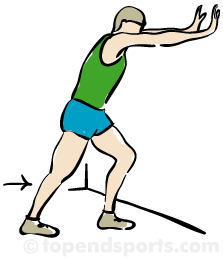Folders |
Ways To Improve: Stretching - By Ka'Deem WynnPublished by
Ever since elementary school, we have always been told to stretch before we do any type of physical activity. A good stretch will make those tight and cold muscles and tendons of yours all warmed up and loose. But as we get older, we sometimes tend to get a bit lazy from time to time and that’s when the question emerges: Do I really need to stretch? The answer is both yes and no.
Stretching: Friend Or Foe? For years, and even today, people have debated whether they need to stretch before running. But the question isn’t if we should stretch before or after we run, but is it good for us? Most people say that it’s not good, nor needed. According to the leading research studies, stretching actually hinders you in many ways. Running only requires your legs for the most part, to move in a specific range of motion. If you’re able to run comfortably without pain of any kind, then there’s no need to stretch. Stretching, though it seems, does not prevent injury. Injury is actually prevented by dynamic warm-up activities, things to get your body warm and your heart rate up. In addition, it makes you slightly tired. It is said that the time you spend stretching should be spent with more dynamic warm-up activities. With that, performance is said to be more improved than when first stretched. With anaerobic activities such as the 100m Dash, someone who doesn’t stretch, or as much, is believed to run the 100m in a faster time than someone who does. However, stretching isn’t as bad as it seems. It’s actually very helpful in some ways.I personally am a fan of stretching. Before I go on long runs, and even during, I don’t usually stretch unless I’m just feeling really tight or uncomfortable. I do however; get a good stretch before all of my workouts. An 8-10 mile recovery run is much different and far more relaxed than 500m and 600m repeats. A long run requires the use of more slow twitch fibers; whereas something like 600m repeats required more fast twitch fibers, and could cause muscles to be pulled or strained if not properly prepared for the activity beforehand. As we get older, muscles tighten and the range of motion in the joints is minimized. As runners, you’re never promised the feeling of getting up in the morning and not feeling tight or sore. No, it won’t happen all the time, but runners know when it’s time to do a bit of stretching. Doing that will both help you in a small way, and ease your discomfort, as you’re tight or sore throughout the day. Stretching can:
Increased energy levels (resulting from increased circulation)
When To Stretch It is entirely up to the individual. Some like to do it before their run. Some prefer to do it after; and some do it during. None of these are wrong. It just depends on who the individual is and at what level they’re running at. I do recommend that it would be better to stretch before engaging in any type of anaerobic activity. It doesn’t have to be a whole circuit, but just enough to loosen your body up a bit. However, stretching doesn’t have to be done only around the time that you’re running. The best times to stretch is when you’re not running. At home, school, work, virtually anywhere and anytime that you're not engaging in aerobic and anaerobic activities is the perfect time to stretch. Whether you get 30 minutes to stretch or 30 seconds, there's always time and plenty of opportunity to stretch.
Different Types Of Stretches There are a few common types of stretching for different things. Three main static, active, and dynamic stretching.
Static Stretch
Static stretching involves you to hold the muscle in a stretched position for 20-30 seconds. Hold and stretch until you feel a good stretch, (commonly known as a slight discomfort). It’s best done after a workout.
Active Stretch
Active stretching means you’re stretching a muscle by actively contracting the muscle in opposition to the one you’re stretching. With active stretching, you relax the muscle you’re trying to stretch and rely on the opposing muscle to initiate the stretch. Active stretching can be challenging because of the muscular force required to generate the stretch but is generally considered lower risk because you are controlling the stretch force with your own strength rather than an external force.
Dynamic Stretch
Dynamic stretching means a stretch is performed by moving through a challenging but comfortable range of motion repeatedly, usually 10 to 12 times. Although dynamic stretching requires more thoughtful coordination than static stretching, it is gaining favor among athletes, coaches, trainers, and physical therapists because of its apparent benefits in improving functional range of motion and mobility in sports and activities for daily living. Note that dynamic stretching should not be confused with old-fashioned ballistic stretching (remember the bouncing toe touches from PE classes?). Dynamic stretching is controlled, smooth, and deliberate, whereas ballistic stretching is uncontrolled, erratic, and jerky. Although there are unique benefits to ballistic stretches, they should be done only under the supervision of a professional because, for most people, the risks of ballistic stretching far outweigh the benefits. Additional stretches include the lizard, and pigeon, which work great, as I’ve used it myself. They’re really great for your hip flexors if they get a little tight. For you calves, the calve stretch is another good one I’ve used.
Lizard Stretch  How the lizard stretch is achieved is very simple. You start out in a low lunge position. Then, you lean forward, and allow your body to descend, allowing your shoulders to be at or below your knee. If you choose to go lower, it's up to you. To get a better stretch, extend the back leg and straighten it as much as possible. Hold this position for 15-20 seconds. More seconds can be added if needed.
Pigeon Stretch
Why it's called "The Pigeon" is beyond me, but this one is a bit tricky. This is a great way to increase flexibility. To start, get down on both hands and knees. Then (with whichever leg you prefer), extend the leg into a lunge motion. Once that position has been achieved, slowly walk your leg down until it is flat on the ground. It should be in an 'L' shape. After that, drop the rest of your body to the ground. Your back leg should be extended straight back. Once all of this is done, use your hands and slowly walk your body forward until you are almost flat on the ground. When this is done, and arms are extended outward, hold for 20-30 seconds. After the hold period is done, slowly walk yourself back up and release your leg for the 'L' position.
The Calve Stretch. This is an example of one way you can perform the calve stretch. In this example, place your hands against the wall. Slightly extend one leg towards the wall, and your other leg in the opposite direction. Keep feet firmly planted flat on the ground and lean forward slightly. You should feel a slightly uncomfortable pull in your calve muscle. When you’re done, switch legs and repeat. This can be done in more than one repetition.
Some say that stretching is overrated. Others might argue that statement. But doing these simple stretches is just another one of the ways to improve. |















